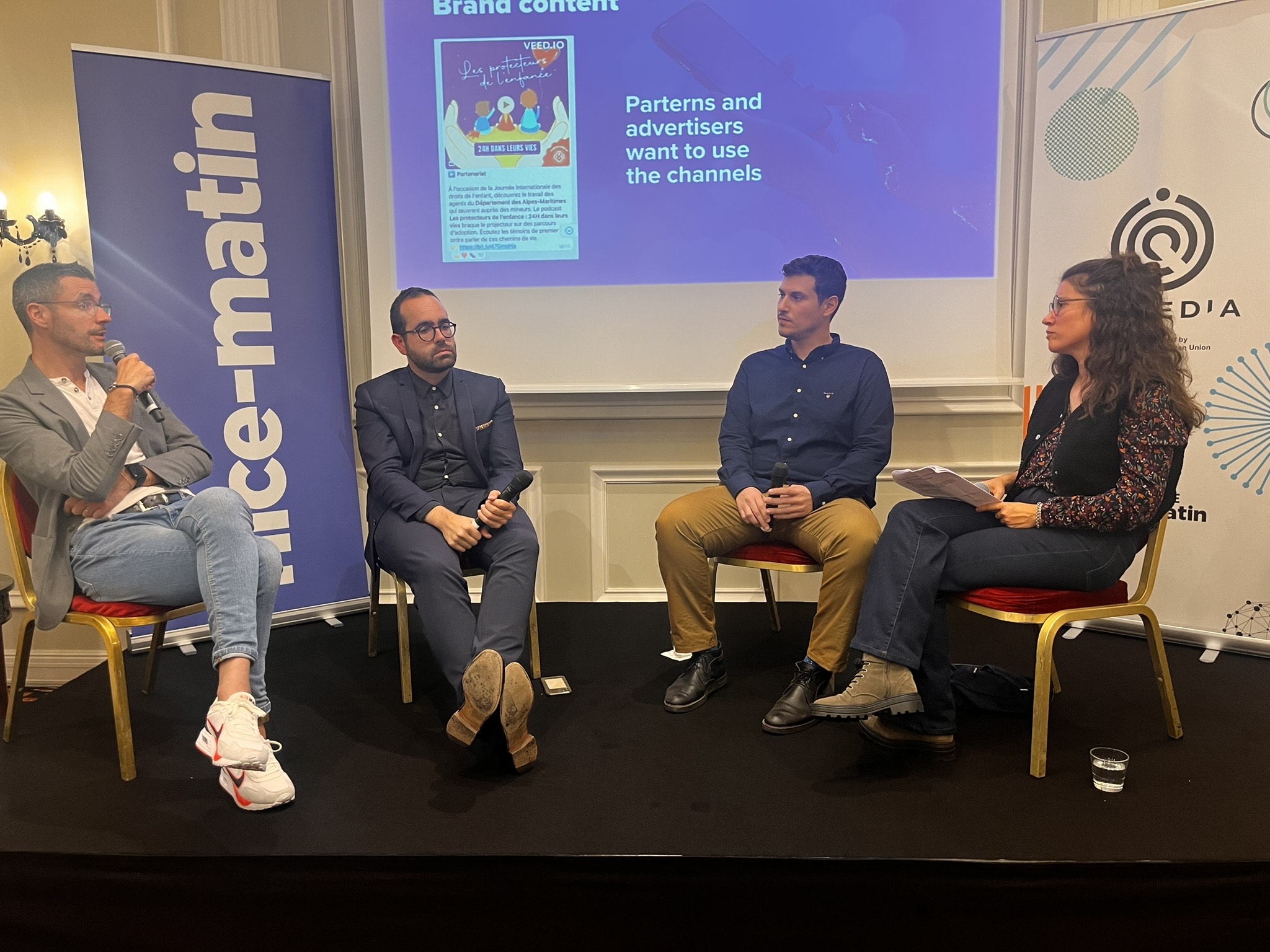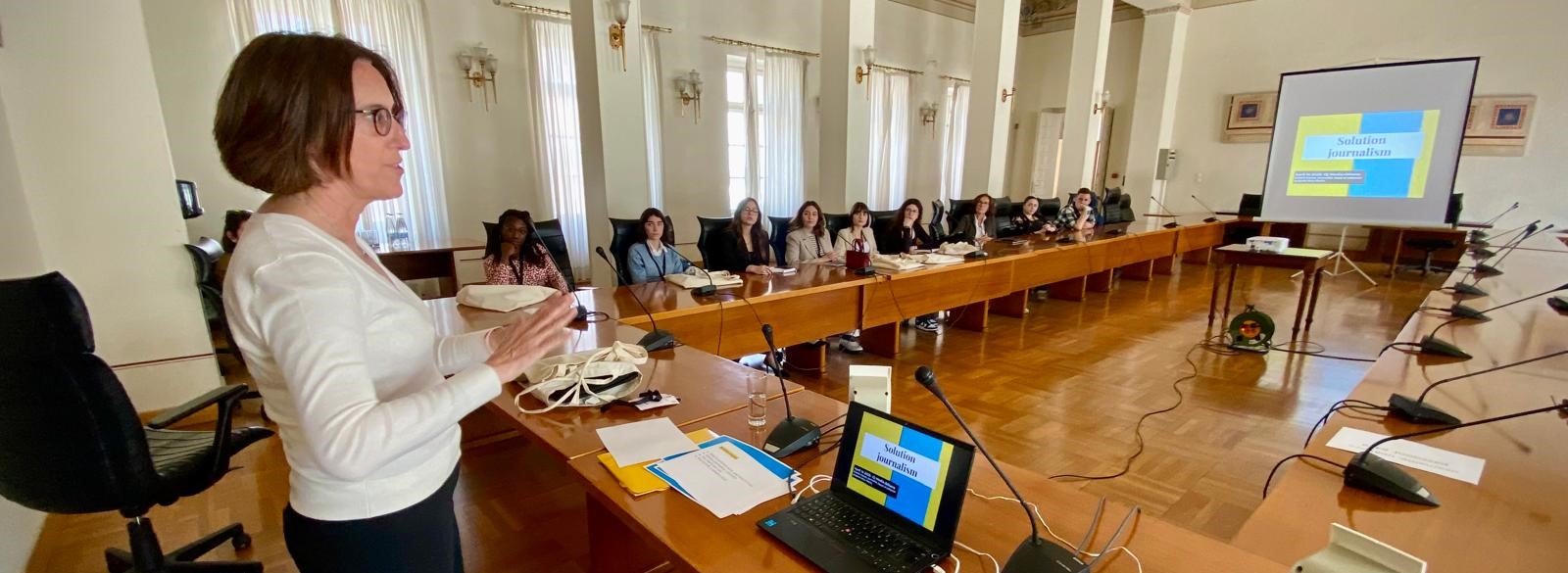
Insights on how to develop and implement audience-first strategies
What are audiences’ expectations, by age group and information habits? Can trust in the press, undermined by other players on the media scene, be restored? And how? These are just some of the issues that are prompting the media to rethink their editorial strategies, and to make them even more complex. But solutions do exist.
🖋️The change at the heart of editorial departments
Federica Cherubini’s field of study is leadership development. Every year, she writes a report entitled “Changing Newsroom”. The aim? To take a close look at work methods, whether hybrid or flexible, how to retain talent…
“Managing people and human processes is a slightly different job and requires a slightly different set of skills to that of an excellent journalist or editor. That’s why we run courses on topics such as feedback, managing a team, but also, more generally, on how the industry is evolving, the external challenges we face and the internal challenges of news organizations.“
The survey was carried out between January and February 2023, and the new one will be published in June this year. It covers six continents, 46 markets and 93,000 respondents. It is an online survey. It is supported by 17 different organizations, including Google News initiatives. For the first time, Africa is supporting our work in three African countries this year.
🗣️Taking audience into account in editorial work
Journalism cannot be analyzed without taking audiences into account. “We can produce the best investigative work possible, but if that journalist doesn’t meet his or her audience, then of course his or her objective is considerably reduced,” notes Federica Cherubini.
But this audience and its contours have been challenged by the arrival of digital technology, which has considerably fragmented usage and multiplied the number of media outlets and players in the media sphere. Whether in terms of production or distribution.
The media findings:
- television and print media are in decline
- use of social networks remains stable
- if we take into account the level of education of those interviewed, the decline is even more significant, and the results are more detailed.
📰How do people access and consume information?
There is a decline in interest in news in some countries, but not in all. The countries showing the steepest decline across Europe: France, Spain and the UK. Some countries have remained a little more stable.
Different generations use different media.
- the 55+ age group prefers television
- 18-24 year-olds, social networks
Click here to watch the masterclass video:
⛔Selective avoidance
Two behaviors are noteworthy:
People no longer consume information.
People consume information but voluntarily choose to avoid certain news. 41% of users have adopted this practice of selective avoidance in the UK, compared with 24% in 2017. Among the subjects avoided are economic topics, deemed too depressing. These people avoid general news sources. They access information by scrolling their screens, on social networks, one news item chases another, they don’t go into detail but rather pass from one news item to another without digging. Their interest in information and politics is generally low.
People avoid certain subjects and reduce their access to information.
They limit the number of times they consult the news, certain times of the day, turn off notifications or avoid certain topics. This was the case, for example, with the war in Ukraine. This news has been described as a source of anxiety, creating a feeling of helplessness among users who don’t really know what to do with the news, or how to act. These practices are sometimes difficult to accept for journalists, whose job it is to follow the news and describe the complex reality of the world.
How do you respond to this selective avoidance when you’re a media company? How do you balance good news with bad news, so as not to turn people away from the news?
Two considerations:
> This detour of information is surely due less to the subject itself than to the way it is told.
> The mistake is to want to serve only the most committed and loyal readers.
So you have a small percentage of very committed and loyal users. Then there are people who are really willing to engage and another 36% who selectively avoid news.
Here are some answers:
> We need to give people the keys to playing an active role in news.
> We need to develop different formats to meet the needs of a segmented market.
Examples: long-form, blogs, solution-based journalism that gives people the keys to taking action and having an impact on their daily lives. Also, inspiring stories that shed light on our daily lives, or question-and-answer formats.
🤝How can we restore trust?
Observation: people have less trust in the media
Journalists are under attack from all sides. Some of these attacks come from the world of politics, politicians and political activists. This is the case, for example, in the USA and the Philippines, where politicians and those in power are really driving these new narratives of being anti-media.
Showing what’s behind the scenes. What are the reasons for the low level of trust in the press? This is the question the Reuters Institute seeks to answer. First observation: this low level of trust is fuelled by repeated attacks on the press by the political and business worlds. Transparency in journalistic work is one answer to this problem. Showing how news is produced.
A first response: show how information is produced.
An example of the BBC’s response: Operation Verify
The BBC has launched a major campaign called “verify”, which emphasizes that, in a world of abundant, uncertain and erroneous information, we need to go back to a brand we really trust. The idea: to show how things happen behind the scenes, with journalists being asked to tell the story of how they reported it.
Combining climate concerns and solutions journalism
Adding certain aspects of solutions to articles, without watering down reality, can also be part of the answer. For example, sharing information where people can take action and have a role to play, and perhaps feel they have some power over what’s happening, but also, sharing inspiring stories, stories of impact at community level, at local level. This creates a close bond with the reader, who is more easily drawn in.
📱 What are the best ways to get information?
The rise of Tiktok, YouTube and Instagram
News consumers now use YouTube, Instagram and Tiktok more than Facebook for information. This trend is all the more marked among 18-24 years-old. This shift is prompting us to give even more thought to formats, and their diversity according to the different distribution platforms.
The rise of podcasts
Across 20 countries, between 2019 and 2023, 34% of those surveyed said they got their news from podcasts. The share of podcasts dedicated to news is smaller (12%). But it’s still significant, and slowly increasing. What’s interesting is to think about how these podcasts are combined with different formats.
Impact of multiplicity of platforms on behavior
This impact translates into a more fragmented use of information. The abundance of negative polarized information and policies contributes to low levels of engagement, low levels of trust. Today, consumers are looking for value-added products. This added value comes in the form of bundled offers that provide a variety of content. The new generations of consumers are growing up with these habits, which need to be understood to adapt the offer as effectively as possible.
Choosing where you want to be: the example of Will-média in Italy
This Italian media company has an Instagram account through which it shares information in infographics. But that’s not all. Will-média offers a range of different formats, from podcasts to newsletters. Thanks to this diversity, it reaches out to different generations. Will média also organizes a number of events that bring a virtual community closer to a real one. What’s interesting is that they think about how they choose which platform to be on or not. For example, they’re not on Twitter. They’re not on X because their audience isn’t there.
🤖Reconnecting with the news: answers from Artificial Intelligence
Personalizing information
This guarantees greater autonomy for audiences in their choice of information as well as the monitoring of specific subjects. There is, however, a limit: too wide a choice of information could discourage users, who would then turn to a trusted “friendly brand” to make the choice for them. Does AI have an impact on trust and avoidance? That would be very interesting to observe and analyze.
Algorithms and general skepticism
We studied how people perceive the algorithms that select news for them. The result is that they are skeptical. So whether people get information through algorithms or through people selecting for them doesn’t make much difference. Hence the use of the phrase “widespread skepticism”.
💶Who pays for online info?
Roughly 17% of people pay money. In general, they pay for a subscription. But in some cases, they may combine national and local subscriptions. It’s usually the big, quality brands that attract most subscribers. For example, the New York Times, Le Monde, El Pais. However, there are also many niche subscriptions. How do you take into account the impact of the cost of living? Bundling can be a response to the rising cost of living. A good option is to couple the offer with other elements, such as games.
🧠The importance of thinking about your own strategies and priorities
At the very least, this is a question that media outlets need to ask themselves. Every medium should have its own strategies and think about where its audience is and who it wants to reach. For each audience, it’s a question of adapting to a particular language and format. Why do some content creators have a greater impact than others? Because they have succeeded in adapting to the language of an audience, and the way they address them resonates with them.
| Federica Cherubini is the Director of Leadership Development at the Reuters Institute for the Study of Journalism. |

